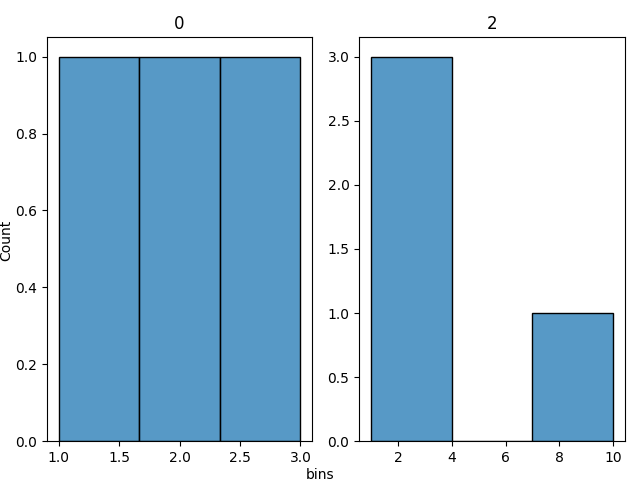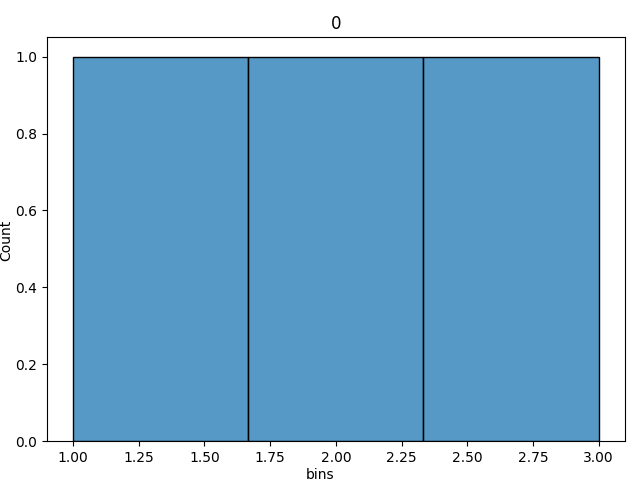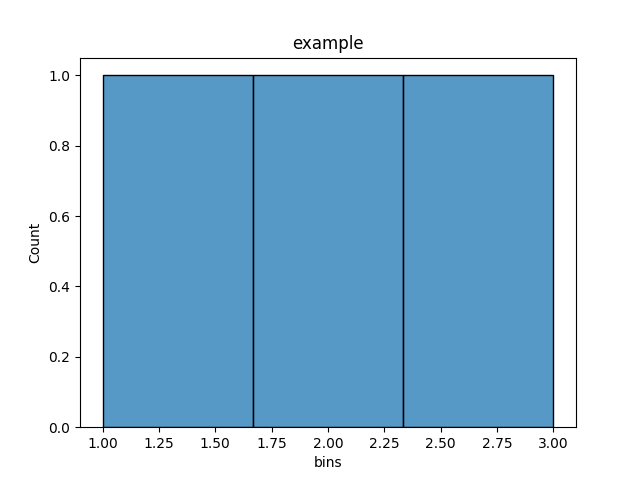Graphs¶
Graph Your Data¶
We can plot some of our data as seaborn histogram plots. Below will demonstrate how to do so and provide examples.
The following plots are currently available to work directly with your profilers:
histogram (numeric columns only)
Below shows how to do so with examples.
What we need to import¶
from dataprofiler.reports import graphs
The main functions that is used to plot histograms are in graphs. You will also need the `dataprofiler[reports]` requirement to be installed:
pip install 'dataprofiler[reports]'
Plotting from a StructuredProfiler class¶
With a StructuredProfiler class variable, we can specify what columns we want to be plotted, and plot them into histograms.
graphs.plot_histograms(profiler, columns)
These are what the variables mean:
profiler - StructuredProfiler class variable that contains the data we want
columns - (Optional) The list of IntColumn or FloatColumn we want to specifically plot.
Plotting an individual IntColumn or FloatColumn¶
Example uses a CSV file for example, but CSV, JSON, Avro or Parquet should also work.
graphs.plot_col_histogram(column, axes, title)
These are what the variables mean:
column - The IntColumn or FloatColumn we want to plot
axes - (Optional) The axes we want to specify.
title - (Optional) The title of the plot we want to define.
Examples¶
This example demonstrates how we can take a StructuredProfiler class and plot histograms of the specified columns.
import dataprofiler as dp
from dataprofiler.reports import graphs
data = [[1, 'a', 1.0],
[2, 'b', 2.2],
[3, 'c', 3.5],
[None, 'd', 10.0]]
profiler = dp.StructuredProfiler(data)
# This will plot all IntColumn and FloatColumn as histograms (The first and last column).
fig = graphs.plot_histograms(profiler)
fig.show()
# This will only plot the specified column, 0.
columns = [0]
fig = graphs.plot_histograms(profiler, columns)
fig.show()


This example demonstrates how we can plot a low level profiler.
import pandas as pd
from dataprofiler.profilers import IntColumn
from dataprofiler.reports import graphs
data = pd.Series([1, 2, 3], dtype=str)
profiler = IntColumn('example')
profiler.update(data)
# Plot the axes
ax = graphs.plot_col_histogram(profiler)
# get and show the figure of the plotted histogram
fig = ax.get_figure()
fig.show()
